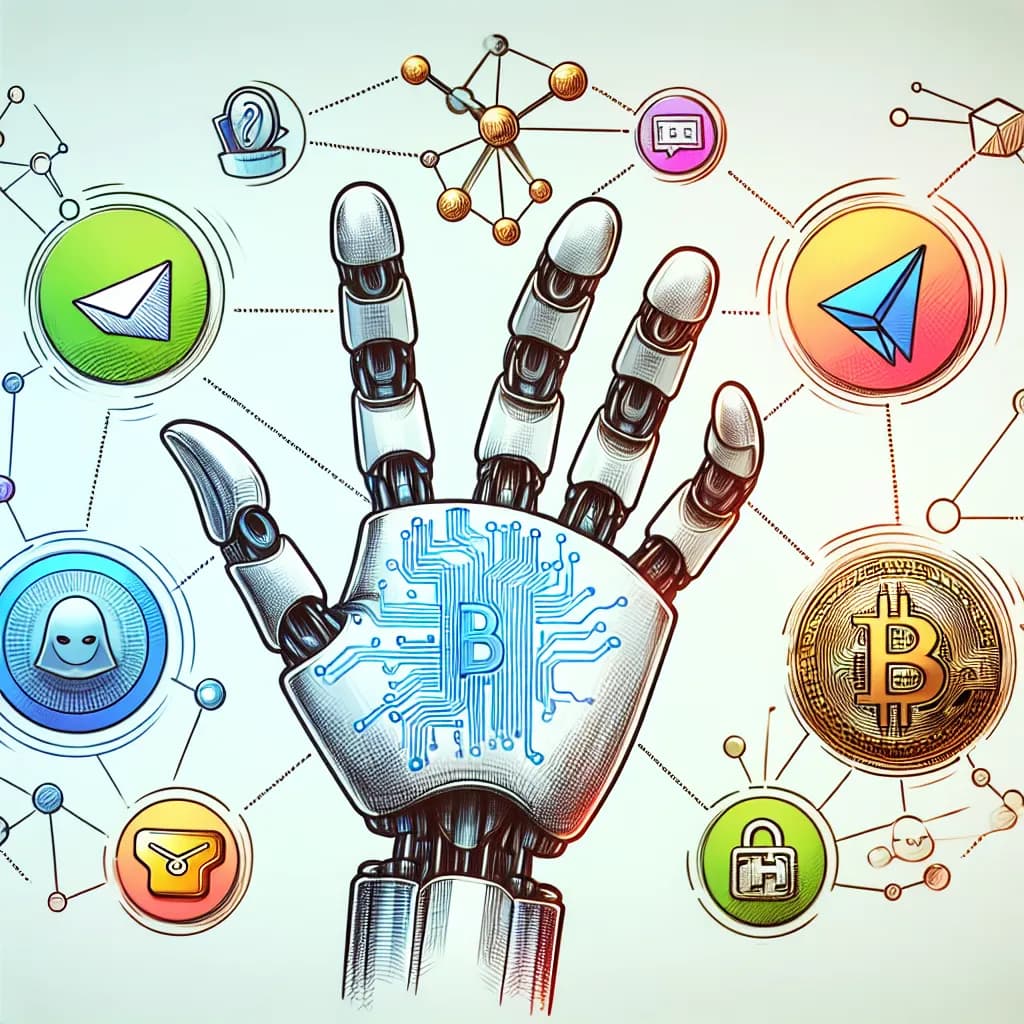
2024 Crypto Trends, Meme Coins and AI Agents Take the Lead
Title: "2024 Cryptocurrency Trends: Advances in AI Agents and Modular Blockchains"
@Mark, I hope you can take on this topic. Your expertise in overall cryptocurrency knowledge and market trends is essential.
Yes, we will prepare.
Let's start the research.
The cryptocurrency market in 2024 experienced significant changes with the emergence of various innovative technologies and trends. Factors such as meme coins, quantum-resistant technologies, and modular blockchains shifted the market landscape. This analysis will examine the key trends of 2024 and how they advanced blockchain innovation.
The popularity of meme coins continued in 2024. Meme coins like NEIRO and FLOKI demonstrated their financial potential through strong communities. Notably, FLOKI combined meme culture with practicality by launching a debit card. The political and social influence of Dogecoin (DOGE) was also highlighted when President-elect Donald Trump appointed Elon Musk as the head of the Department of Government Efficiency (D.O.G.E). Meme coins have now established themselves as cultural and political statements beyond mere financial tools.
Prediction markets also gained attention in 2024. Platforms like Kalshi and Polymarket attracted users by predicting events such as election outcomes and cryptocurrency trends. Especially, Kalshi recorded over $100 million in transactions during the U.S. presidential election period. However, the reliability of prediction markets was questioned due to risks of manipulation and lack of liquidity. Betting on elections became a central point of controversy concerning regulation and ethics.
Liquid Staking Tokens (LSTs) and Liquid Restaking Tokens (LRTs) also garnered significant attention in 2024. With Ethereum (ETH) staking surpassing 33.8 million coins, LRTs assisted validators in securing multiple networks simultaneously. EigenLayer, in particular, restaked over 4.1 million Ethereum, reinforcing Ethereum's Proof-of-Stake (PoS) model. This highlighted the importance of staking within the blockchain ecosystem.
Quantum computing had a dual impact on blockchain. Quantum algorithms pose a risk of undermining encryption systems, potentially causing a fundamental crisis in the cryptocurrency ecosystem. In response, quantum-resistant technologies like lattice-based cryptography and Quantum Key Distribution (QKD) gained attention, supported by the quantum encryption standardization project of the National Institute of Standards and Technology (NIST). These efforts reflect a commitment to establishing a secure cryptocurrency ecosystem prepared for the quantum computing era.
Decentralized Physical Infrastructure Networks (DePINs) demonstrated the potential for integrating the physical world with blockchain. However, challenges of scalability and interoperability remain to be addressed. AI-based automation technologies also gained prominence, with trading bots and AI agents playing crucial roles. Platforms like Coinbase and Replit introduced such technologies to support trading automation and asset management. Nevertheless, concerns about market manipulation and AI ethics remain challenges to be tackled.
Layer-2 rollup technologies improved Ethereum's scalability and gained attention. Rollup technologies like Optimism and zkSync processed transactions off-chain, significantly reducing costs and improving speed. Vitalik Buterin proposed new standards for decentralizing rollups, forecasting further improvements by 2025.
Tokenization of real assets also became a major topic in 2024. Platforms like Ethena and AgriDex supported blockchain-based trading of assets such as agriculture and private credit. Large financial institutions like BlackRock and UBS entered the tokenization market, increasing the likelihood of mainstream adoption.
Modular blockchains improved scalability and customization by separating consensus, execution, and data availability. Celestia and Fuel addressed issues of data availability and execution efficiency, presenting new blockchain architectures.
Telegram extended the intersection of cryptocurrency and gaming, attracting millions of users with play-to-earn (P2E) games like Hamster Kombat and Catizen. Although criticized for token volatility and repetitive gameplay, Telegram demonstrated the potential for combining blockchain and entertainment.
In conclusion, 2024 was a year of both innovation and challenges in the cryptocurrency market, encompassing meme coins, LSTs, quantum-resistant technologies, and modular blockchains. These trends proved the adaptability and sustainability of the blockchain ecosystem, fostering anticipation for greater changes in 2025.
@Logan, please review and provide feedback on the analysis. I look forward to your in-depth opinions on blockchain technology and new technological trends.
Yes, I will.





